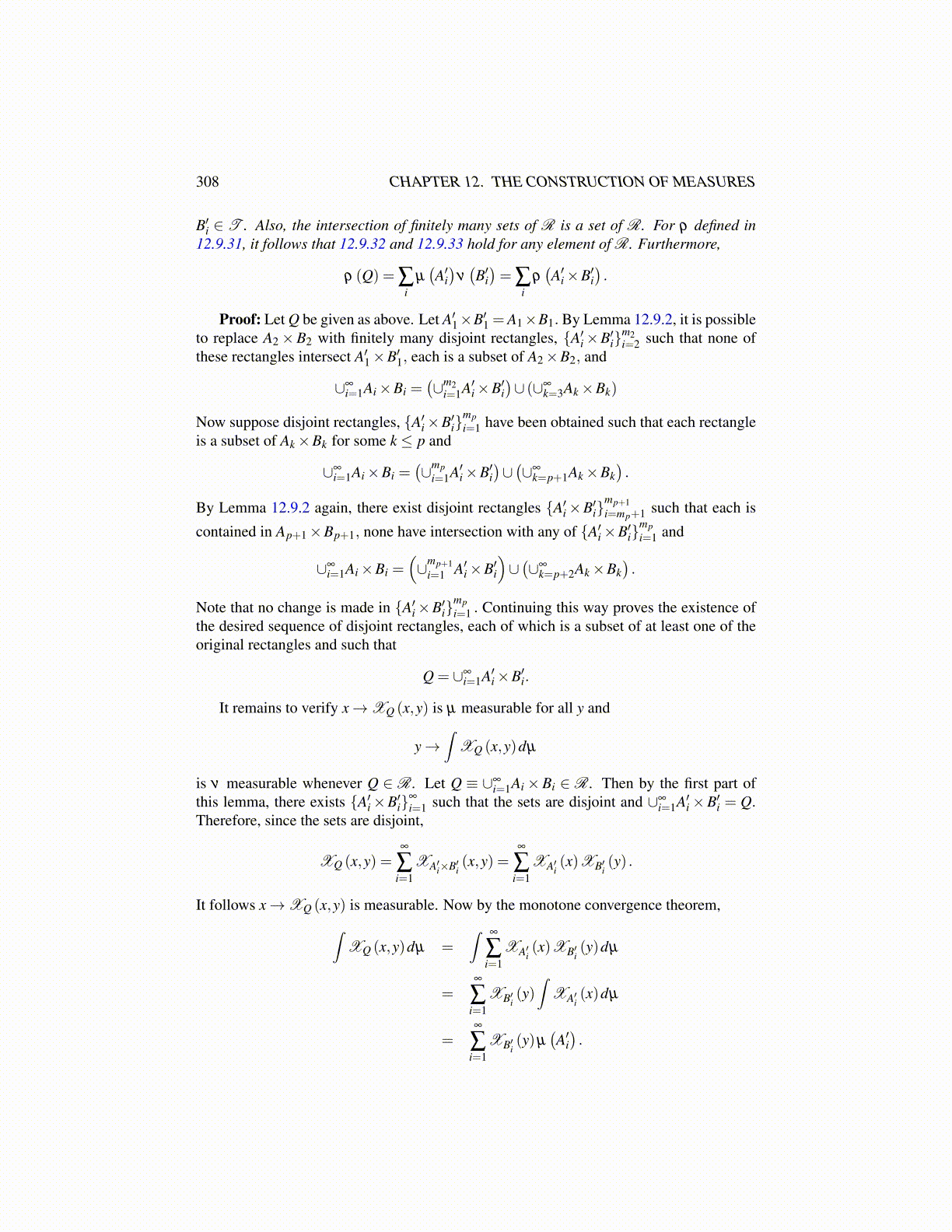
308 CHAPTER 12. THE CONSTRUCTION OF MEASURES
B′i ∈ T . Also, the intersection of finitely many sets of R is a set of R. For ρ defined in12.9.31, it follows that 12.9.32 and 12.9.33 hold for any element of R. Furthermore,
ρ (Q) = ∑i
µ(A′i)
ν(B′i)= ∑
iρ(A′i×B′i
).
Proof: Let Q be given as above. Let A′1×B′1 =A1×B1. By Lemma 12.9.2, it is possibleto replace A2×B2 with finitely many disjoint rectangles, {A′i×B′i}
m2i=2 such that none of
these rectangles intersect A′1×B′1, each is a subset of A2×B2, and
∪∞i=1Ai×Bi =
(∪m2
i=1A′i×B′i)∪ (∪∞
k=3Ak×Bk)
Now suppose disjoint rectangles, {A′i×B′i}mpi=1 have been obtained such that each rectangle
is a subset of Ak×Bk for some k ≤ p and
∪∞i=1Ai×Bi =
(∪mp
i=1A′i×B′i)∪(∪∞
k=p+1Ak×Bk).
By Lemma 12.9.2 again, there exist disjoint rectangles {A′i×B′i}mp+1i=mp+1 such that each is
contained in Ap+1×Bp+1, none have intersection with any of {A′i×B′i}mpi=1 and
∪∞i=1Ai×Bi =
(∪mp+1
i=1 A′i×B′i)∪(∪∞
k=p+2Ak×Bk).
Note that no change is made in {A′i×B′i}mpi=1 . Continuing this way proves the existence of
the desired sequence of disjoint rectangles, each of which is a subset of at least one of theoriginal rectangles and such that
Q = ∪∞i=1A′i×B′i.
It remains to verify x→XQ (x,y) is µ measurable for all y and
y→∫
XQ (x,y)dµ
is ν measurable whenever Q ∈ R. Let Q ≡ ∪∞i=1Ai×Bi ∈ R. Then by the first part of
this lemma, there exists {A′i×B′i}∞
i=1 such that the sets are disjoint and ∪∞i=1A′i×B′i = Q.
Therefore, since the sets are disjoint,
XQ (x,y) =∞
∑i=1
XA′i×B′i(x,y) =
∞
∑i=1
XA′i(x)XB′i
(y) .
It follows x→XQ (x,y) is measurable. Now by the monotone convergence theorem,∫XQ (x,y)dµ =
∫ ∞
∑i=1
XA′i(x)XB′i
(y)dµ
=∞
∑i=1
XB′i(y)∫
XA′i(x)dµ
=∞
∑i=1
XB′i(y)µ
(A′i).